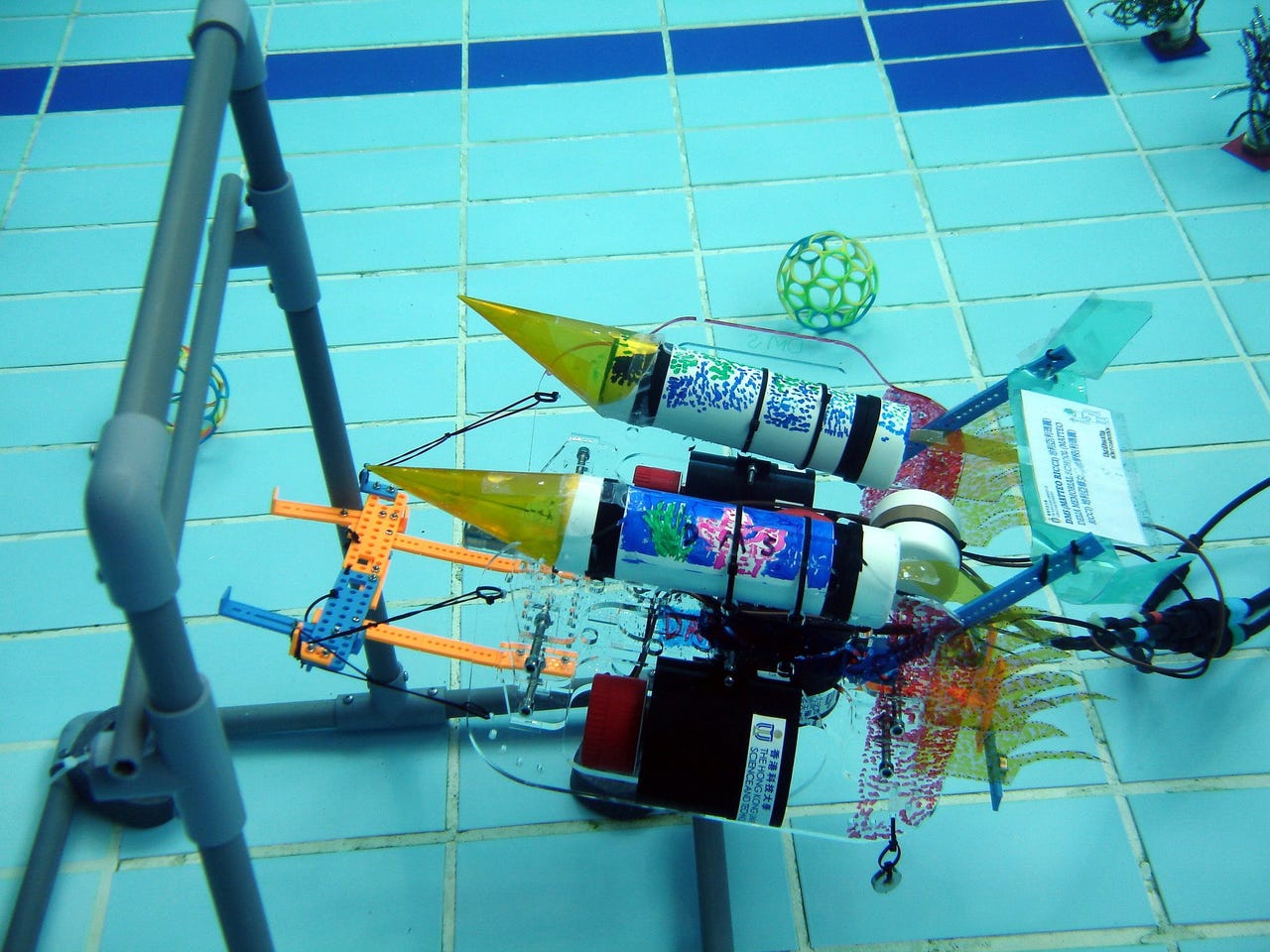Robots can drive and fly. This is why they're not great swimmers.


First robots took over the land. Then, thanks to the drone revolution, they went airborne. It stands to reason that the next environment where we'll see a proliferation of autonomous machines will be the sea.
But it's an environment where robots have struggled, primarily because of the difficulties of underwater communications, the prevalence of unpredictable occurrences, and the difficulty of precise positioning underwater, where GPS is ineffective.
Robotics
The Marine Advanced Technology Education (MATE) Center hopes to change that by enlisting some smarty-pants students in levels ranging from middle school to university in an intense underwater robotics competition. Bring on the floaties.
The competition will take place at the formidable Neutral Buoyancy Lab. At 202 feet long, 102 feet wide, 40 feet deep, and with a capacity of 6.2 million gallons, the NASA NBL is the world's largest indoor pool. It's normally used to train astronauts for spacewalks and other extra-vehicular space tasks.
The MATE competition challenges student teams from all over the world to complete complex tasks with underwater robots - also known as remotely operated vehicles, or ROVs - that they design and build. This year's competition highlights technologies that are developed for exploration and scientific use in both ocean and space environments.
The problems have real-world relevance. For example, in the ocean-themed missions, students will use their ROVs to turn a decommissioned oil rig into an artificial reef and collect oil samples and coral specimens. The space-based missions challenge students to pilot their ROVs under the ice sheet of Jupiter's moon Europa to collect data and deploy instrumentation.
This year's competition will host a record number of teams - 70 - from all over the world. Before this month's event, teams from across the world participated in 26 regional contests that feed into the international event.